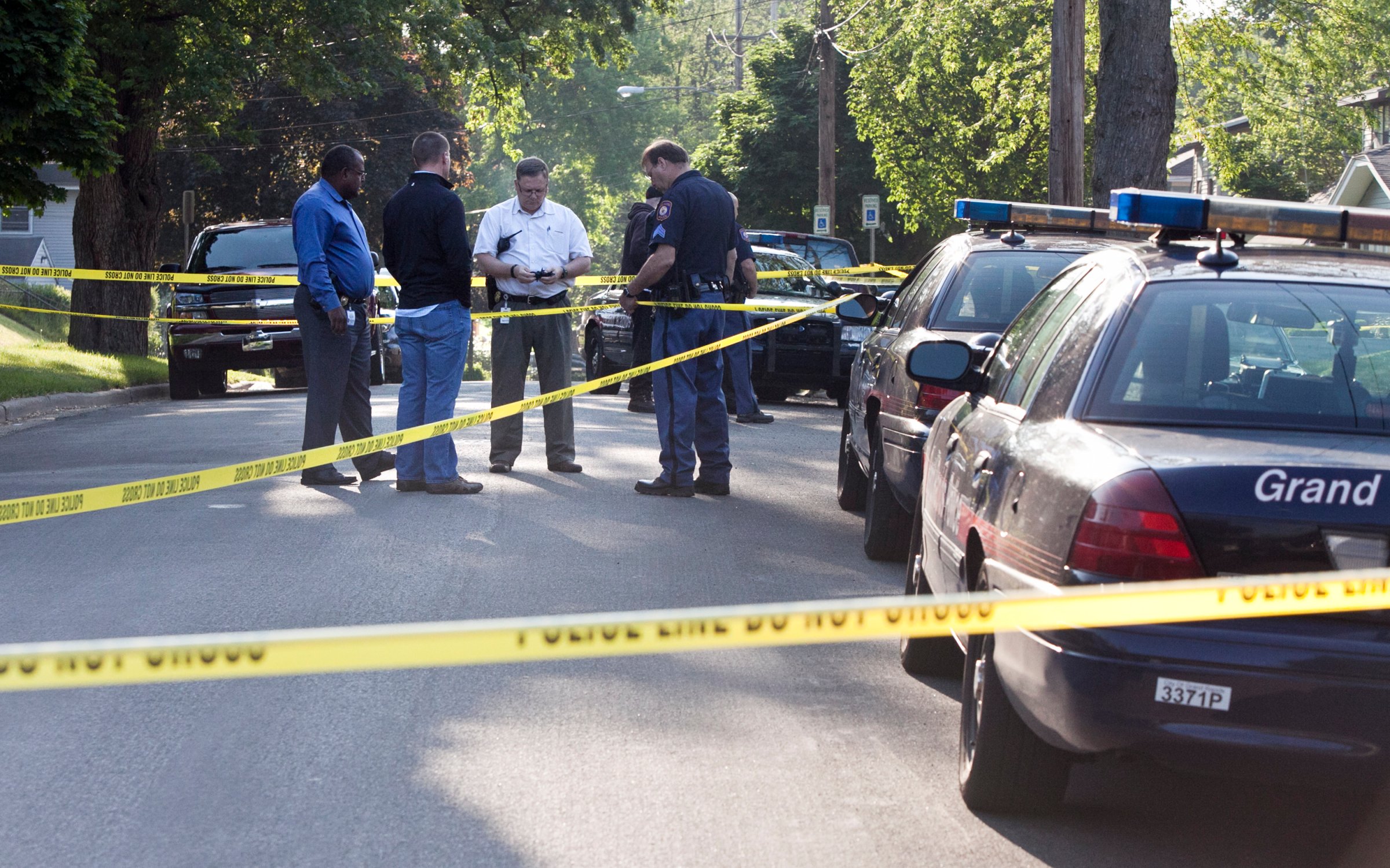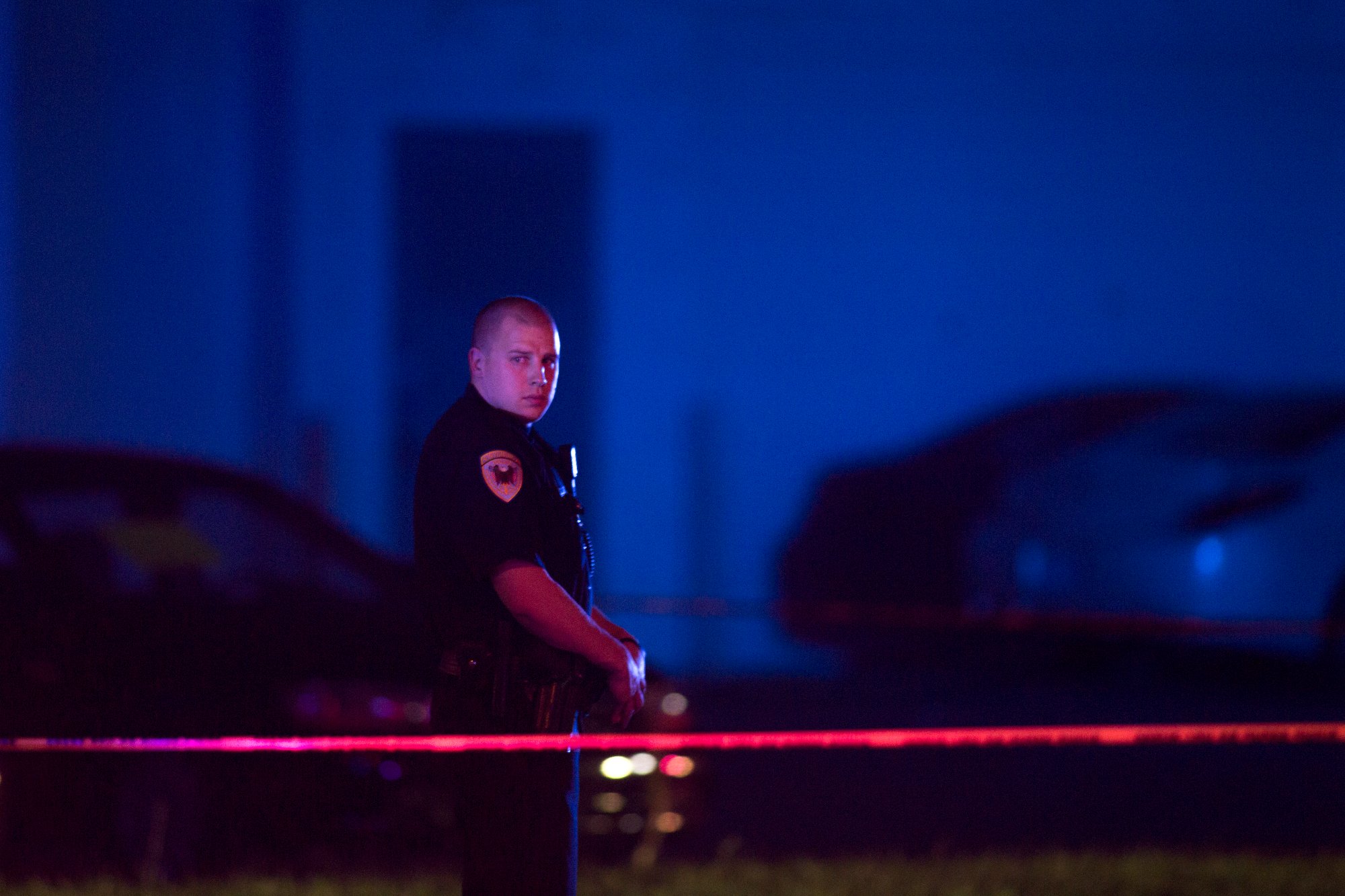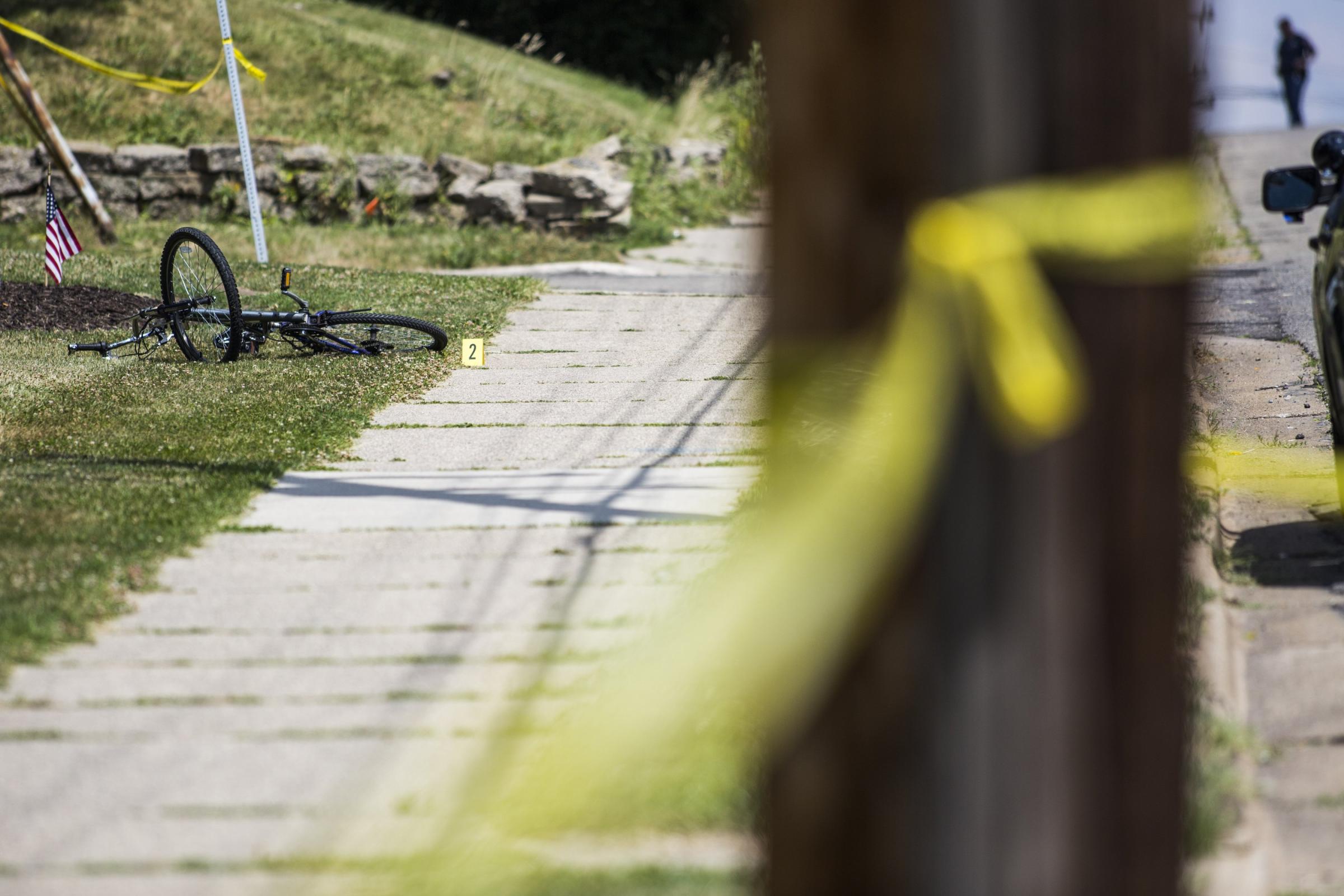
Grand Rapids, Mich., isn’t a big city. But according to life-long resident JD Chapman Jr., it has a lot of “big-city problems” nonetheless.
“We have all kinds of problems with our education, our health care system, poverty—and of course violence,” Chapman, 40, tells TIME.
In the city of roughly 200,000 residents, Grand Rapids’ Black community (19% of its total population) in particular struggles with generational poverty and “hopelessness,” Chapman says. He and other residents describe Grand Rapids as very segregated, with opportunity disproportionately concentrated in the city’s wealthier outskirts and suburbs.
It was due to that lack of opportunity, Chapman says, that he started to get into legal trouble around the age of 12. At this time, Grand Rapids was in the midst of the crack epidemic plaguing many inner-city communities across the country.
Coupled with the poverty that already existed, Chapman says, the result was “wars on the streets.” But when he got out of prison at the age of 26 in 2007—after a 10-year sentence for armed robbery—he decided he wanted to be part of something positive in his community, mentoring kids who might have otherwise wound up in a situation like the one he had faced.
“If you’re like me and you survived what goes on out there, you have a duty to share that with someone else,” Chapman tells TIME. “If you can prevent just one individual from enduring some of the things I witnessed, it can do a world of difference.”
In 2014 Chapman started Realism in Loyalty, a community organization that helps high-risks youths in Grand Rapids and works to address violence occurring in the city. It’s just the kind of initiative that communities across the country are looking to in a moment of turmoil. The National Commission on COVID-19 and Criminal Justice, a subsidiary of the Council on Criminal Justice (CCJ) that was created to assess the impact of the coronavirus on the criminal justice system, released a report in October recommending more investment in community-led initiatives to deal with violence.
But despite what appears to be widespread support, implementing such programs and properly funding them remains difficult, especially in smaller cities like Grand Rapids. That’s why local activists are turning to a new tactic to try and bridge that gap. If they succeed, it could offer a blueprint for cities across the country; if they fail, they still hope to have brought greater attention—and pressure—to their demands.
Tackling the problem of street violence and crime in Grand Rapids’ inner-city communities has been a multi-year endeavor and activists there, including Chapman, agree there are no simple solutions. But that doesn’t mean they have given up. For example, they have long lobbied the city government for funding to pay for violence prevention and de-escalation programs.
Though a number of such programs exist, activists in Grand Rapids have focused on Cure Violence, which was launched in Chicago by Dr. Gary Slutkin in 2000 and has since spread to cities including New York City; Washington, D.C.; Baltimore and Milwaukee. Cure Violence frames inner-city violence as a disease. The treatment? Outreach workers who act as peacemakers in potentially violent conflicts.
Now, the matter has only become more urgent. Grand Rapids, like many others across the U.S., has experienced a rise in violence in 2020. (Over 20 people have been killed as a result of gun violence this year. That’s up from 19 in 2019, and only nine in 2018. There have been over 400 shooting incidents this year.)
“We have a lot of retaliatory violence because our city is so small. If you have beef with someone you can find them. Because we’re so close in proximity it makes it difficult for these conflicts to fizzle out on their own,” Raynard Ross, a local activist, explains.

But while Grand Rapids’ city budget has had $75,000 set aside for a “Cure Violence Pilot” for several years running, that money has never been put to use.
A major part of the reason is that while crime prevention models like Cure Violence may sound like the kind of grassroots efforts that could run on nothing but goodwill, they require investment and a financial commitment from a city or community’s budget. In the case of Grand Rapids, it’s estimated that full implementation of the Cure Violence program could cost up to $581,433—a total that would cover outreach workers’ salaries, equipment and accounts for spending on community events and meetings among other expenses.
Activists who support the effort say the expense would be worthwhile, citing some noteworthy successes in cities where the program has been used. In its first year of implementation, shootings decreased by 67% in the West Garfield Chicago neighborhood. When the program was used in Philadelphia, shootings were reduced by 30%. One Baltimore neighborhood saw a 56% decrease in homicides in 2012 while the measure was in use—though a subsequent study from Johns Hopkins University revealed several other neighborhoods in the city where the program was being implemented didn’t see such decreases.
(Other concerns have been raised regarding the collaborative commitment required to make violence reduction programs work: St. Louis, which last year announced a commitment of $7 million over the next three years to fund Cure Violence, turmoil has struck amid the rollout and activists have stepped away from the board that helps oversee its implementation because, they allege, city officials are “undermining the program.” Similar problems have been reported by activists in Jacksonville, Fla.)
“I think Grand Rapids is like a lot of small cities in that it has some serious issues dealing with poverty and dealing with opportunities and dealing with violence,” Charles Ransford, the director of science and policy for Cure Violence—and a local resident to whom activists reached out—says. “Grand Rapids is really an ideal place for a Cure Violence approach.”
So, this summer, leaders in the city took matters into their own hands and started a crowdfunding campaign, launched Aug. 24, to raise a portion of the funds that would be needed to bring Cure Violence to Grand Rapids. Their hope is that presenting these funds to city hall will entice officials to invest the rest from the city’s budget.
While it is common for activist groups to crowdsource for funding community initiatives and improvements, the framing of the campaign in Grand Rapids as a “challenge” for city officials is newer. Activists hope this model—if successful—could inspire other small cities to do the same.
“We’re asking for support, we’re asking for help,” says Chapman. “It just seems as if the powers that be are turning a blind eye to the ills of the urban community, specifically when it comes to violence.”
Behind the push for funding are two larger considerations. First, reform efforts can only go so far without financial support. And second, spending is a pretty solid indication of where any organization or government’s priorities lie.
Chapman says many of those to whom he’s spoken in the local government say they’re supportive of the idea of bringing Cure Violence into the city—but don’t want to take on the financial burden.
According to Grand Rapids’ fiscal plan, the overall city budget for 2021 is $531 million. The Grand Rapids police department’s budget will be over $55 million, or over a third of the city’s general fund. (A city’s general fund is for “discretionary spending” and goes towards funding public safety, public works and health services.) In this context, activists in Grand Rapids believe the city is making excuses by saying they can’t afford Cure Violence. The CCJ’s report likewise notes that community-led programs like Cure Violence are usually the first ones to be cut from budgets but are “inexpensive in comparison to traditional crime responses.”
“When we talk about budgets and funding, really, what we’re talking about is the priorities that the city has. Funding is always about priorities,” Cure Violence’s Charles Ransford says. “When a city fails to fund violence prevention, that’s an indication that violence prevention is not a priority to that city.”

In July 2019, Ransford presented city officials with three potential financing options for implementing the program in the city—the standard Cure Violence budget to scale for Grand Rapids, and two pared-down proposals that shaved nearly $200,000 and $250,000 respectively off its costs. “I made clear in my presentation to the city commission that these scaled back models are not evidence-based, but we would work with them to get something that could have an impact,” Ransford says.
Joe Jones, a city commissioner and president of the Grand Rapids Urban League, says he has been working to get financial support for the program from the local philanthropic community. But, he adds, costs aren’t the only obstacle. Some in local government, he says, feel as if Grand Rapids doesn’t have the same problems as bigger cities who “need” a program like Cure Violence.
The city comptroller’s office and the mayor’s office did not respond to multiple requests for comment from TIME.
“My rebuttal to that is there is not a price that is too high that we can pay in order to get to a better place and get to a more peaceful and prosperous community,” Jones says.
In one of the worst periods of violence this year for the city, 11 people were shot across the weekend of Sept. 12 and 13. Grand Rapids police responded by placing over 100 officers on the streets the following weekend, during which they collected 10 illegal weapons and made 16 felony arrests. Shootings across the city dropped. In addition, officers made an increased effort to engage and speak with community members—not just to investigate crimes, the police department says, but to build trust.
“By all accounts, we can label this a significant success,” Grand Rapids Police Chief Eric Payne said. “My officers worked very hard to address the violence and engage residents in a positive way.” But, echoing activists in other cities, community leaders in Grand Rapids say the police can only do so much. They’re looking for more proactive measures as opposed to reactive ones.
“They’ve tried to do the same things over the years but none of it has been truly effective,” Tami VandenBerg, a Grand Rapids resident and community advocate, says of the Grand Rapids police department. VandenBerg supports calls for Cure Violence, as she believes something new is needed. “If we do what we’ve always done, we’ll get what we’ve always gotten,” she says—adding that what many of the city’s residents have gotten is not good enough.
Chapman and other activists attended a city commission meeting in September with high hopes that, with their crowdfunding campaign active, commissioners would show some signs of seeing things differently. Instead, the city commission said they are standing by their $75,000 commitment and will “closely monitor the efforts of other community entities that are pushing this effort.”
Chapman described it as “more of the same.”
As for the crowdfunding campaign itself, while it was originally scheduled to end on Sept. 26., it has been extended to Oct. 30 to help it meet its goal.
So far, the campaign has only raised around $15,000, but Chapman is not worried about the final tally. He still believes that funding will eventually come through local philanthropic groups and says that, even if the final figure falls short, it will not deter activists or impede their calls for change.
“Grand Rapids is a city of a lot of meetings, conversation and no action,” he says. “It’s time to end that. We have a population whose voices need to be heard because they have value.”
More Must-Reads from TIME
- Cybersecurity Experts Are Sounding the Alarm on DOGE
- Meet the 2025 Women of the Year
- The Harsh Truth About Disability Inclusion
- Why Do More Young Adults Have Cancer?
- Colman Domingo Leads With Radical Love
- How to Get Better at Doing Things Alone
- Michelle Zauner Stares Down the Darkness
Write to Josiah Bates at josiah.bates@time.com